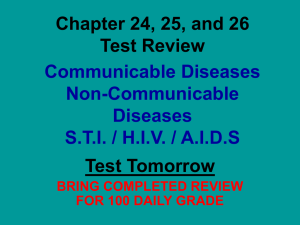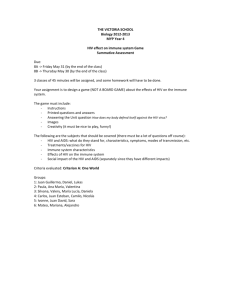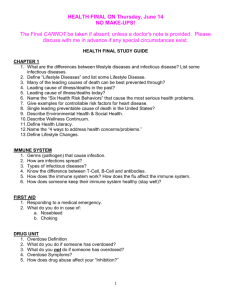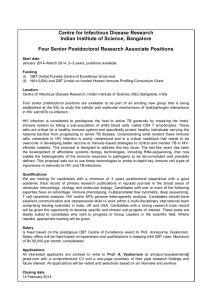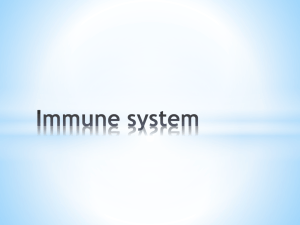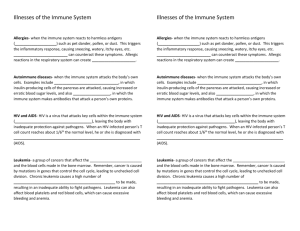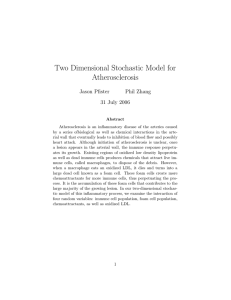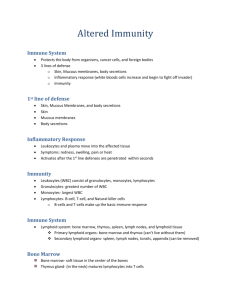Atherosclerosis, the most prevalent form of arterial disease in
advertisement
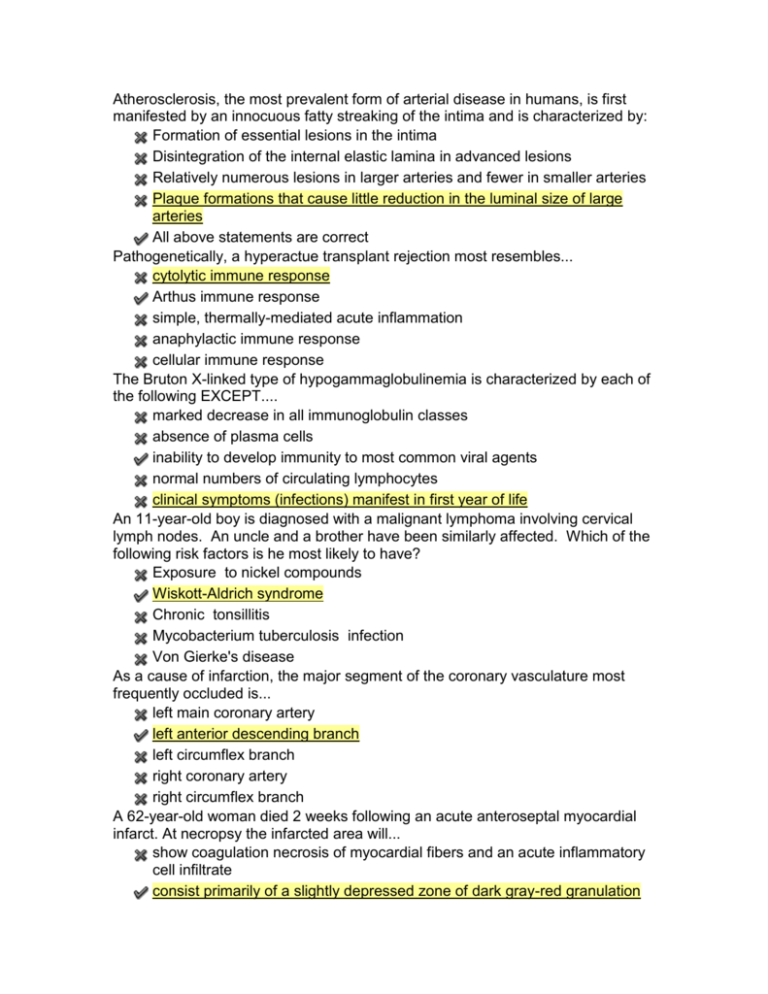
Atherosclerosis, the most prevalent form of arterial disease in humans, is first manifested by an innocuous fatty streaking of the intima and is characterized by: Formation of essential lesions in the intima Disintegration of the internal elastic lamina in advanced lesions Relatively numerous lesions in larger arteries and fewer in smaller arteries Plaque formations that cause little reduction in the luminal size of large arteries All above statements are correct Pathogenetically, a hyperactue transplant rejection most resembles... cytolytic immune response Arthus immune response simple, thermally-mediated acute inflammation anaphylactic immune response cellular immune response The Bruton X-linked type of hypogammaglobulinemia is characterized by each of the following EXCEPT.... marked decrease in all immunoglobulin classes absence of plasma cells inability to develop immunity to most common viral agents normal numbers of circulating lymphocytes clinical symptoms (infections) manifest in first year of life An 11-year-old boy is diagnosed with a malignant lymphoma involving cervical lymph nodes. An uncle and a brother have been similarly affected. Which of the following risk factors is he most likely to have? Exposure to nickel compounds Wiskott-Aldrich syndrome Chronic tonsillitis Mycobacterium tuberculosis infection Von Gierke's disease As a cause of infarction, the major segment of the coronary vasculature most frequently occluded is... left main coronary artery left anterior descending branch left circumflex branch right coronary artery right circumflex branch A 62-year-old woman died 2 weeks following an acute anteroseptal myocardial infarct. At necropsy the infarcted area will... show coagulation necrosis of myocardial fibers and an acute inflammatory cell infiltrate consist primarily of a slightly depressed zone of dark gray-red granulation tissue in which there are many pigmented macrophages. be composed of a dense collagenous scar. bulge from the cut surfaces as a soft, mottled, red and yellow area. A patient presents with gradually progressive weakness of the legs and pain on mild exertion. His legs are slightly pale, and the skin is thin and shiny. He is probably suffering from : Atherosclerosis Venous thombosis Arterial emboli Left heart failure Gangrene In the following statements, which of the combinations is INAPPROPRIATE? Raised T.S.H., Low T3 & 4, Hashimoto"s thyroiditis. Decreased T.S.H., Low T3 & 4, Hashimoto"s thyroiditis. Low T.S.H., raised T3 & 4, Graves disease. Hashimoto"s disease, antibodies to TSH thyroid microsomal fractions. Addisons disease, hyperkalemia, hyponatremia, Nelson"s syndrome A hemolytic transfusion reaction is classified as... atopic-anaphylactic antibody-mediated cytotoxic immune complex cell-mediated Which of the following immunoglobulins is able to cross the placenta? IgM IgD IgG IgA IgE Which of the following is the most valid explanation of why host defenses are unable to cope successfully with the HIV agent in AIDS? HIV establishes a reservoir in the brain HIV infection decreases HLA class II antigen expression HIV infection disables B-cell immunity by rendering T-helper cells ineffective HIV is a retrovirus and produces no characteristic antigens macrophages and other antigen-presenting cells are disabled by HIV Ten days following an abdominal operation a 77-year-old man is found to have a WBC of 15,000 & SGOT of 120 units and an abnormal electrocardiogram. The myocardium is likely to exhibit... inflammation necrosis both neither Arteriosclerosis is most likely to impair the function of the... heart kidney liver spleen lung The characterisitc lesion of atherosclerosis is the: Intimal fatty streak Atheromatous plaque Fibrofatty medial lesion Intimal cell mass Vasa vasorum obliterative endarteritis Most important as a guide for the clinical and therapeutic management of the AIDS patient is/are the ... degree of encephalopathy being manifested number of CD4+ lymphocytes per microliter of blood number of different infectious agents involved results of skin test with candida extract severity of lymphadenopathy A few minutes after receiving an injection of penicillin, a patient complains of itching and then headache. The patient appears flushed and short of breath and shortly thereafter collapses. This event most likely involves... classic pathway activation of complement release of lysosomal enzymes from neutrophils deposition of immune complexes in vessel walls degranulation of mast cells blastic transformation of T lymphocytes
